Asking what’s the best way to waterproof a chimney or what are the best waterproofing products are both understandable enough questions, but they’re also too broad for a simple answer. Best way to waterproof what kind of chimney? Are we waterproofing a vertical wall or the breast of the brickwork? There are brick, concrete block, stucco and stone chimneys and there are different considerations for all of them – meaning you might use different products on different types of chimneys. Let’s peel this back like an onion.
 Choosing the Right Waterproofing Product
Choosing the Right Waterproofing Product
Before getting started, please understand that the less a waterproofing product costs, the less likely it is to do you any good. One major brand costs fairly little but lasts a rather short amount of time because it breaks down in with UV exposure (sunlight.)
You want a product that uses poly siloxanes or silanes. Basically, that means that it doesn’t use solids to block up the pores of the masonry, rather it sets up an electrostatic charge that outside water can’t overcome. At the same time, if the masonry has trapped moisture in it the day you decide to waterproof (and it very well may) the head pressure of the water inside will be able to overcome the electrostatic charge and escape. In other words, water can’t get in, but it could get out if need be. The good stuff does cost more – not prohibitively more – but it is oh so, so worth it.
Sealing Brick Chimney
Since about 99% of the people reading this have brick chimneys, let’s start there (I will address non-brick chimneys later). One of the central issues concerning waterproofing is the porosity of the material being waterproofed. This makes sense: you don’t have to waterproof steel or vinyl because water doesn’t penetrate them in the first place. While bricks are generally less porous than many other materials (like a cinder block) different types of bricks vary in porosity themselves.
This explanation is to set the stage for understanding that sometimes you have to waterproof a chimney more than once. You should know this too: though we don’t like to admit it, the fact is that sometimes professionals misjudge how much waterproofing a chimney needs and wind up coming back when they get a complaint. We sure don’t like that, nor do we like people being dissatisfied with our work, but where waterproofing is concerned, it seems to be a fact of life. Moral of that story is 1) ask your waterproofer to go over it twice just for good measure (even if it costs a bit more) and 2) don’t be too tough on your guy if you have to call him back. I thank you on behalf of all the guys who ever get caught in that squeeze! And please look below for special information concerning re-applications.
A last item before moving onto specific information: If you have spalling brick, i.e. the faces of the brick are popping off, don’t bother to waterproof the chimney; it’s too late. Instead kick yourself for not having done it ten years ago and have the brick structure rebuilt. Then waterproof it so it doesn’t happen again.
Now for some specific information, still with bricks:
How is chimney waterproofing applied?
Waterproofing is applied with a sprayer. On the vertical walls, i.e. most of the chimney, waterproofing should be applied from bottom to top because as the waterproofing material comes out of the sprayer it runs down the chimney and gets absorbed into the chimney below the area being working on. It sort of amounts to doing it twice. Obviously, the top needs extra attention or it’d only get one pass. And as mentioned before, I’d do it twice. After you finish about 10 minutes’ worth, do it again just to make sure the whole structure gets a good soaking.
Special considerations should be given to breast walls, re-application, the crown, the flashing area and the mortar joints. The breast wall is where a chimney doesn’t go straight down to the ground, rather goes around something (almost always a fireplace.) They aren’t usually outright horizontal areas, a 30°-60° angle is pretty common. These areas should get different treatment.
Sealing the Chimney Breast
Because the chimney breast has a more severe exposure to rain and particularly snow, it needs more coats of waterproofing. Most waterproofing used these days is water-based material. This is for a couple reasons: one is that water-based materials cost considerably less than solvent based materials. They are safer to ship, store and use and they are perfectly adequate to the task. The exception to the advantages is on non-vertical surfaces.
One way to deal with a non-vertical surface is to waterproof it over and over and over. Another is to use a solvent-based material, still with polysiloxanes, because it soaks deeper into the substrate. For a chimney with a breast below, opt for the more expensive solvent-based waterproofing.
A special note about re-applications. If one needs to re-apply waterproofing after the water-based material has already dried, solvent-based waterproofing should be used. This is not common knowledge, even among the trade. Whether re-applying the next day or ten years later, use solvent-based waterproofing. Don’t be alarmed that if after reading this article you know more than the people you hire to do the job; most people don’t know all this. Just patiently insist on getting what you ask for.
Sealing a Chimney Crown
The chimney crown is an almost flat surface and it’s made of concrete or mortar. It shouldn’t be made of mortar, but there’s a good chance that it is anyway. Based on what you’ve just read about waterproofing the chimney breast, you’d reasonably think that you’d just use a solvent based waterproofing material there. But that is not so: a crown requires more than ordinary waterproofing.
The crown is rather porous. If you’re lucky the crown will be made of concrete and will have been worked in a way that makes the top quite smooth and non-porous. But on average, crowns are fairly porous and have more exposure to rain and snow than all of the rest of the chimney, and accordingly more problems (e.g. leaks) that the rest of the chimney as well.
There are coatings made specifically for crowns (the two major brands are Weather Tight and Saver Systems and both are generally available to the trade only.) Regardless of the brand being used, crown preparation is key. All the moss and dirt must be wire-brushed away. The crown should be wetted down before the material is applied. Crown coatings applied to dry surfaces don’t develop the necessary bond you’re looking for. Large cracks should be caulked with high resin filler before the crown coat is applied.
A note on horizontal surfaces which are not chimney crowns, such as driveways etc. Siloxanes are not the best choice here because driveways are made of concrete. A similar material (silane) is appropriate in order to get proper bonding with the substrate. It’s not that chimney waterproofing material won’t work; it’s just that silanes will last longer in this instance.

The flashing area needs special attention. Traditional flashing, which 99.9% of all of us have, is not actually so great. I’m sure traditional in-the-mortar-joint-flashing was a huge improvement over whatever was before it a hundred years ago, but don’t imagine it keeps water out the way you wish it did.
There are terrific flashing products which, in my opinion, are sadly underused. Flash Seal and Flash Tight (once again, Saver Systems and WaterTight products) are high-resin coatings specifically for this purpose. To waterproof the flashing really well, ask for one of these products. Your sweep may or may not even know what you’re talking about, but don’t hold that against him. In this case you’ll be educating him. As I said, they are still under-appreciated products at this point.
Now for the big one: the mortar. Since most leaking occurs at the joints, you want to be extra sure you soak them real well with the waterproofing. You should know that as a rule mortar joints are often not as well bonded as you might think they are, and there are actually small cracks in the mortar (usually not visible though.) The joints themselves have different properties on different chimneys depending upon whether mortar cement or Portland cement was used, not to mention the particle size of the sand used and the pH of the water that was mixed to make the mortar.
How long does chimney waterproofing last?
Before moving on, let me answer another FAQ. The question is how long does chimney waterproofing last? Answer is, as a general statement, probably about 20 years for most people. If you have the wind blowing sand at your chimney a lot, perhaps in the desert or by the sea, the brick surface can wear away, but most people don’t have that. There are guarantees, generally about 10 years. When those guarantees were instituted they were basically guesses from studies done in wind tunnels and freeze-thaw cycles. After a lot of years of observation, 20 years seems to be a generally good answer. Having it redone every 10-15 years is reasonable maintenance.
What is the difference between beading and repelling water?
A related subject: there’s a difference between “beading” and repelling water. Right after anything is waterproofed, there is a very satisfying effect called beading. This is where you see beads of water just sitting on the surface, kind of like seeing water sitting on oil. As neat as it is to see, at effect is temporary. I don’t know why, but the fact remains that waterproofing remains effective for many, many years beyond the beading effect is gone.
How to waterproof chimney cinderblock
Now concerning waterproofing concrete block chimneys. Concrete block chimneys are the most porous of all, and they are at the same time most in need of waterproofing and most difficult to get a good result. But not impossible – you just need extra passes, and it’s a good idea to use a solvent-based waterproofing material here as well. As you know, I trash-talked solids in your waterproofing at the beginning of the article. I’ll backtrack just a little here.
Polysiloxane waterproofing material is still the superior technology, but for pores this big, you might do well to outright seal them. You can do that with stucco or by using a waterproof paint. Boat paint might be overkill, but it should work like a charm. There’s also a special hybrid product from Saver Systems that has some solids in it (Chimney Saver for Concrete Blocks).
Stucco chimneys are a bit trickier. (Disclaimer: I know less about stucco than I do about bricks) Old stucco was made with gypsum and I can’t help you with what kind of waterproofing material, if any, should be used. Modern stucco for plastering a chimney however would be made with Portland cement. Porosity would be “not too bad” so you could use a waterproofing material on it, i.e. – it will bond to it.
That said, I’m not sure it’s necessary as I believe stucco is pretty good at keeping water away from the surface below. It’s applied almost an inch thick and it’s pretty good at drying out. I suppose there is the danger of several days of rain and the stucco getting saturated; again I don’t know enough about stucco to comment on how long it will hold how much water. My observation in life is that most stucco surfaces are not falling apart, yet it seems that freezing and thawing should destroy them. Sorry to be of so little help here.
How to waterproof stone chimneys
Finally, there are stone chimneys. Depending upon what kind of stone, the surface may be quite dense or quite porous. Regardless, stone usually doesn’t waterproof well with chimney waterproofing materials. The reason is that siloxanes and silanes bond to silica, and stones may or may not be silica. If they are, it’ll work, and if they aren’t, it won’t. Faux stone on the other hand is made with Portland cement, and you can waterproof it.
A Final Cautionary Word
Let me finish with a fun (in retrospect) cautionary tale. Be careful where you spray your waterproofing material. We once had an employee get cute and draw a smiley face on one of our customer’s driveway. It dried right up, no problem. But, when it rained the smiley face showed up just great. We wound up waterproofing that whole driveway just to keep it from smiling in the rain. Put down cloths on the roof so you don’t get it on the shingles. Never get it on the windows (you’ll mess them up permanently.) And of course, be real careful not to get it on the driveway J
The post How to Waterproof a Chimney appeared first on Highs Chimney.
 Creosote Exposure
Creosote Exposure Chimney Swifts and Histoplasmosis
Chimney Swifts and Histoplasmosis
 Masonry Chimney Repair
Masonry Chimney Repair #1 The Simplest Cause of Chimney Leaking: Rain Going Straight In from the Top
#1 The Simplest Cause of Chimney Leaking: Rain Going Straight In from the Top Bonus: #6 Chimney Leaks That Aren’t Chimney Leaks
Bonus: #6 Chimney Leaks That Aren’t Chimney Leaks

 Choosing the Right Waterproofing Product
Choosing the Right Waterproofing Product

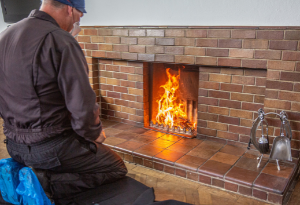 Are you selling?
Are you selling?
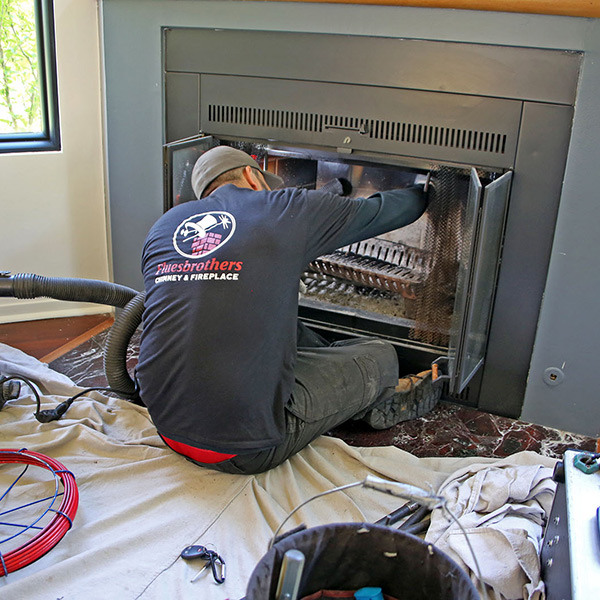 Wood Inserts
Wood Inserts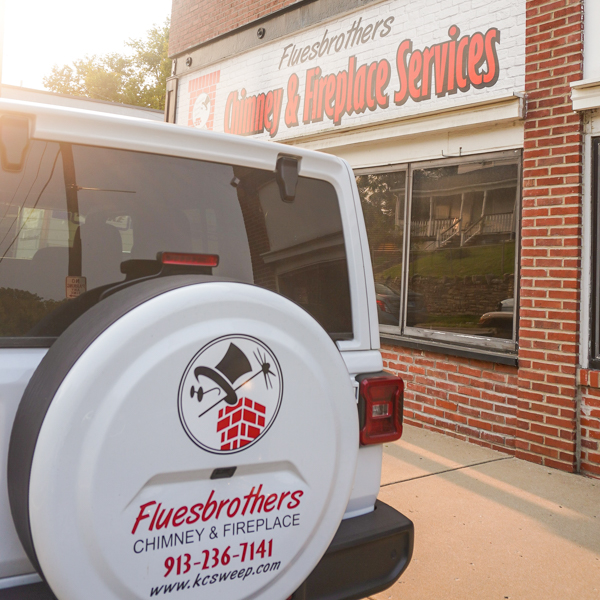 Best Selection & Certified Installation
Best Selection & Certified Installation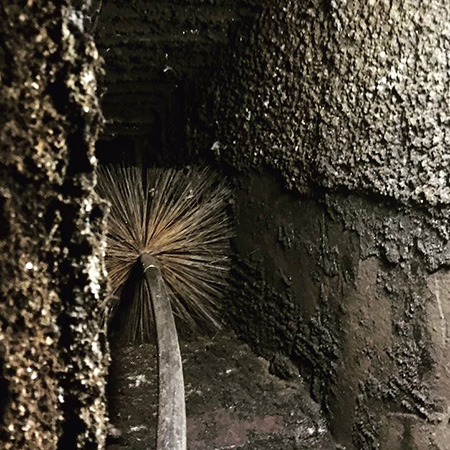 Creosote and soot
Creosote and soot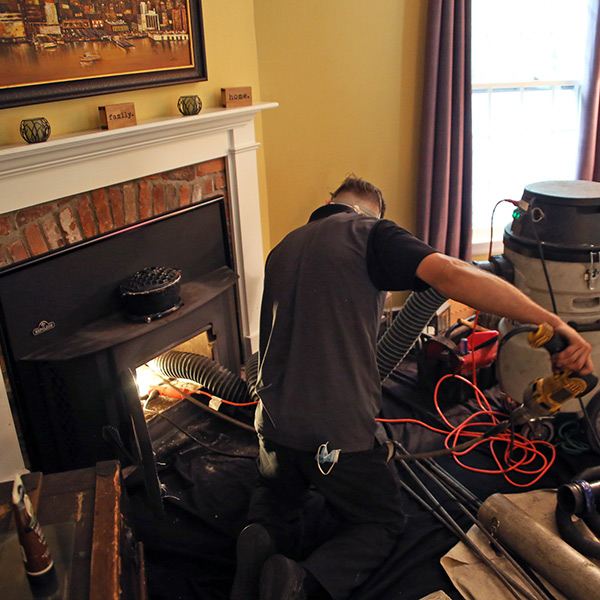 What to do
What to do